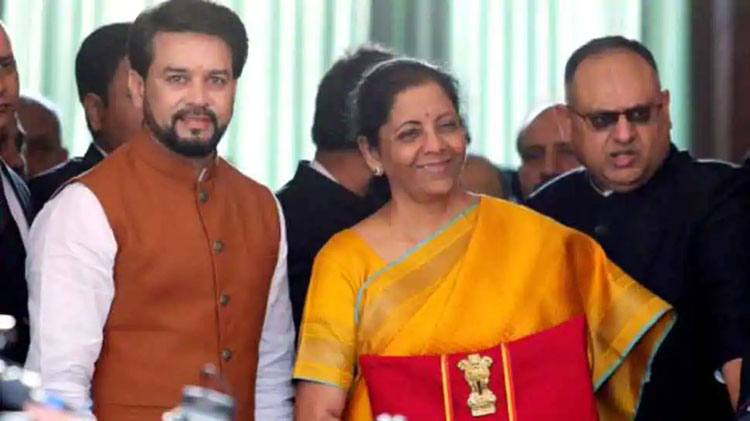New Delhi, Jan 21 (FN Agency) Finance Minister Nirmala Sitharaman will be presenting Modi 2.0’s third budget amid unprecedented times on February 1. The COVID -19 pandemic and resultant lockdown has pushed India to a technical recession. India GDP is likely to contract by 7.5%-10% in the financial year 2020-21. Although greenshoots have appeared in the economy during Q3 FY 2020-21 (October to December 2020), the fundamentals of the economy are still weak – nominal GDP growth is at a 15-year low; unemployment is at a 45-year high; household consumption is at a four-decade low
The low growth has impacted revenue collections of the government which is expected to result in doubling of the fiscal deficit estimate. The FM would struggle to find alternative sources of revenue to fund expenditure and provide stimulus to the economy. Investments have not picked up despite the government lowering corporate tax rate by 10%. How can it, if the operating ratio of companies is at 75%-80%? India’s Investment accounted for 28.3 % of its Nominal GDP in Sep 2020, the number used to be above 35% in 2014. Inflation has been above RBI’s upper band of 6 percent for more than 11 months. Retail inflation cooled off to 4.59% in December.
However a rise in commodity prices and a depreciating dollar could keep inflation high in the coming months. Any fiscal stimulus announced in the Budget could also add to inflationary pressures. Indian economy which is predominantly consumption driven is witnessing a slowdown in private final consumption expenditure. Consumer confidence is low. Consumer confidence weakened in November, 2020 as per RBI survey. The November 2020 CSI reading came in at 52.3 against 85.7 in November 2019.
Disinvestments have not yet kicked off and the country has so far not managed to close sale of prized assets like BPCL and Air India in this fiscal year. The disinvestment receipts so far this year have been about Rs 12,380 crore or 6% of the annual target. While vaccination has started in India, new strains of the virus are being found in different parts of the world, we haven’t still won over the virus. The vaccination program if carried out for free could cost India an amount which is equal to our annual outlay on health. How do we fund it? The farmers have been protesting in the capital for the past two months demanding repeal of the new farm bills. Any attempts to pacify them by increasing the PM Kisan Nidhi support amount will also have implications on the deficit. We are witnessing tensions with China on the Line of Actual Control and need to spend massive funds to upgrade our defence infrastructure to be ready for any eventuality. The economy needs an infrastructure boost, which could revive demand for metals and construction related activities, create jobs and have a multiplier effect on the economy.
Global factors will also impact the preparation of budget, global trade has plummeted with balancing of supply chains. India is positioning itself to emerge as a contender to China by introducing production linked incentive schemes and will need to provide tax benefits. In 8 months up to November 2020, revenue receipts were only 37% of budget estimates for FY21. The tax revenues have been at 42%. The slow economic growth has adversely affected the collections.

